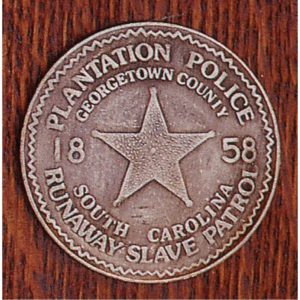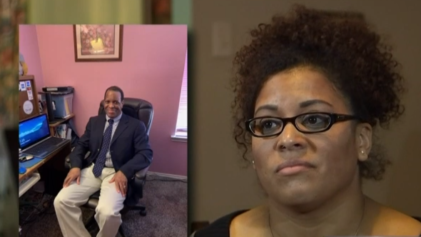Gun sales are up in America, and so are gun massacres. The two are related, and provide a window to understanding the phenomenon of the culture of gun violence in America. It is necessary to consider the history of gun rights in America, and the historical link between white fear of Black people—the enslaved Africans—control of said enslaved Africans, and the unfettered amassing of weapons to protect themselves. And from what threats are white Americans protecting themselves? ISIS and Black protesters.
The gun manufacturer Smith & Wesson is reporting a substantial 27 percent increase in sales over last year, according to the Guardian. This comes only days after the sixth deadliest massacre in U.S. history, the mass shooting in San Bernadino, California, which left 14 people dead.
The gun company’s stock prices are up through the roof, at an eight-year high, notes the Guardian. Smith & Wesson CEO James Debney, who earns $1.9 million a year and is one of the largest contributors to the NRA, is an ardent supporter of the Second Amendment. And the arms manufacturer is not hesitant to link the financial success of the company to the nation’s shooting sprees. In 2013, Debney connected the dots, linking Smith & Wesson’s good fortune to the Sandy Hook massacre, and “fear and uncertainty that there might be increased gun control,” which he said “drove many new people to buy firearms for the first time”.
Brian Ruttenbur, an analyst with financial services firm BB&T, told the Guardian that President Obama’s call for gun control following Sandy Hook led to the best year for gun sales. Today, he explains the increase in gun sales in terms of a white fear of Muslims and #BlackLivesMatter protesters.
“There’s a lot of fear right now of violence with everything going on in anti-Muslim movements and anti-black movements,” he said. “There’s this white fear going on – [people think] ‘It’s an unsafe world, and I need to be armed.’”
It is quite ironic that after centuries of terrorism waged against Black people, Native Americans and others– which continues to the present day—gun sales have spiked because white people fear Muslims and Black protesters. This, in a country where there are over 30,000 gun-related deaths each year, and even acts of terrorism today are primarily the work of white-supremacist “Christian” men. And yet, nonviolent Black protesters in the streets—those who, as targets of white gunmen, arguably need the protection, are the perceived threat to white security and the safety of their families.
This gun paranoia sweeping white America is by no means new, but rather speaks to the history of the United States. In the film Bowling for Columbine, a short animated segment on the history of white people and guns in America sums it all up rather well.
The fact of the matter is that the right to own guns came with the right to own enslaved Africans in this country. As Christopher Dickey in the Daily Beast lays out plainly, the history of gun violence is attributed to the mentality that defended slavery. Generations ago, white folks were eager to own guns in order to keep their enslaved Africans docile and in check, and to prevent them from escaping the hellish conditions to which they were subjected. As Dickey notes, the Constitution had a compromise, Article 1, Section 2, paragraph 3, which allowed the slave states to tally their human property as three-fifths of a person for the purposes of taxation and representation in the legislature. Those enslaved Africans, of course, as Chief Justice Taney said in the 1857 Dred Scott decision, “had no rights which the white man was bound to respect; and that the negro might justly and lawfully be reduced to slavery for his benefit. He was bought and sold and treated as an ordinary article of merchandise and traffic, whenever profit could be made by it.”
The Constitution also provided for a Second Amendment in the Bill of Rights which was devised in order to protect the interests of the Southern states’ slave patrols. These were the militias which maintained the military police state that kept the enslaved Africans in line and protected white society against “servile insurrection,” also known as slave revolts. Whites needed their guns, and when John Brown attempted an insurrection in 1859, gun sales rose along with the level of Southern white paranoia, as Dickey notes. This mentality helps explain white America’s need for unfettered access to guns.
Writing in The Atlantic, Saul Cohen and Eric M. Ruben take this one step further by attributing the notion of an unfettered right to carry weapons in public to the culture of violence and honor in the antebellum South. Southern men, they note, carried weapons as protection against enslaved Africans and for “quarrels between freemen.” The authors add that public-carry proponents cite historical documents from the slave-holding Antebellum South to make their arguments, as ”gun-rights advocates find themselves venerating a moment at which slavery, honor, violence, and the public carrying of weapons were intertwined.”
So, this is why white America justifies buying more and more weapons. Yet, the centuries’ long history of violence against Black people in America, and the circumstances leading to the formation of the Black Panthers and the Deacons for Defense and Justice, suggest that African-Americans are the ones in need of protecting their communities.



